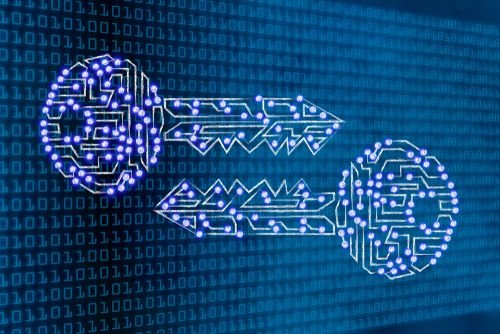
Robotics is an interdisciplinary field combining mechanical engineering, electrical engineering, and computer science to design and build robots capable of performing various tasks. Selecting the right programming language for robotics development is crucial, as it directly impacts the robot’s efficiency, control, and functionality. The ideal language often depends on the robot’s use case, the operating environment, the hardware specifications, and the developer’s skill set. Here is a detailed look at the top 50 programming languages for robotics in 2024, exploring their applications, strengths, and unique features.
1. Python
Python is one of the most popular programming languages for robotics due to its simplicity and versatility. It offers a rich ecosystem of libraries for artificial intelligence (AI), machine learning (ML), data processing, and scientific computing. Python is excellent for rapid prototyping and scripting, making it ideal for testing and developing complex robotics algorithms. Its integration with Robot Operating System (ROS) further enhances its applicability in robotics.
- Use Cases: Control systems, data analysis, AI/ML integration, rapid prototyping, ROS-based development.
- Strengths: Easy to learn, extensive libraries, strong community support.
2. C++
C++ is a powerful, high-performance language commonly used in robotics for low-level hardware control, real-time processing, and developing complex algorithms. Its ability to provide direct access to memory and hardware, combined with its speed, makes it ideal for writing firmware, drivers, and high-performance robotics applications.
- Use Cases: Real-time systems, sensor integration, motor control, embedded systems, ROS development.
- Strengths: High performance, low-level hardware access, extensive control.
3. C
C is one of the oldest and most widely used programming languages for robotics, particularly in embedded systems. Its minimal runtime and direct access to system memory make it perfect for developing firmware and interacting with microcontrollers and low-level hardware components.
- Use Cases: Firmware development, embedded systems, microcontroller programming, hardware interfacing.
- Strengths: Lightweight, minimal overhead, close-to-hardware programming.
4. MATLAB
MATLAB is a powerful language and environment for numerical computing and simulation, widely used in robotics research and development. It provides robust tools for data analysis, visualization, and algorithm development, which are essential for designing control systems, modeling robotic kinematics and dynamics, and conducting simulations.
- Use Cases: Simulation, control system design, robotics research, data analysis.
- Strengths: Advanced mathematical functions, extensive visualization tools, strong support for robotics toolboxes.
5. Java
Java is a versatile, object-oriented language known for its platform independence, which makes it suitable for developing networked and cloud-based robotics applications. Java is also commonly used in educational robotics and environments that require cross-platform compatibility.
- Use Cases: Educational robots, networked robotics, cloud robotics, Android-based robots.
- Strengths: Platform independence, robust libraries, wide community support.
6. Robot Operating System (ROS)
ROS is not a programming language but a middleware framework that provides tools and libraries for writing robotics software. It allows different parts of a robotic system to communicate and share data, making it a standard in the robotics community for integrating software and hardware components.
- Use Cases: Robot software development, middleware for communication between sensors, actuators, and control systems, autonomous navigation.
- Strengths: Modularity, extensive libraries, strong community support.
7. JavaScript
JavaScript is widely used in web-based robotics applications, enabling developers to create interactive interfaces for controlling and monitoring robots. With the advent of frameworks like Node.js, JavaScript is also being used on the server side for real-time data processing and communication in robotics.
- Use Cases: Web-based robot control, visualization, remote monitoring, IoT applications.
- Strengths: Versatility, strong community support, extensive libraries for web development.
8. Lisp
Lisp, one of the oldest programming languages, is known for its use in artificial intelligence (AI) and robotics research. It is particularly suited for developing planning algorithms, decision-making systems, and AI-based robotic behaviors due to its capabilities in symbolic computation.
- Use Cases: AI research, planning algorithms, decision-making systems, robotic cognitive modeling.
- Strengths: Powerful in symbolic processing, dynamic, strong support for AI development.
9. Ruby
Ruby is a high-level, interpreted language known for its simplicity and readability, making it ideal for rapid prototyping and educational robotics projects. It has a clean syntax and is often used for scripting and developing web-based interfaces for robots.
- Use Cases: Educational robotics, rapid prototyping, web-based robot control.
- Strengths: Readable syntax, ease of use, strong community support.
10. Perl
Perl is a versatile scripting language used in robotics for text manipulation, data processing, and automation. It is especially useful for writing scripts that handle configuration, logging, and other administrative tasks in robotics systems.
- Use Cases: Scripting, automation, data processing, text manipulation.
- Strengths: Powerful text processing capabilities, flexible, good for quick scripting tasks.
11. Scratch
Scratch is a visual programming language designed for educational purposes, particularly for teaching children the basics of programming and robotics. It uses a drag-and-drop interface to make programming accessible and fun, making it a popular choice for beginners.
- Use Cases: Educational robotics, introductory programming, simple robot control.
- Strengths: Easy to learn, highly visual, beginner-friendly.
12. Blockly
Blockly is another visual programming language similar to Scratch, used for creating web-based programming environments for robots. It provides a block-based interface that makes it easy to program robots without writing complex code.
- Use Cases: Educational robotics, drag-and-drop programming interfaces, web-based control.
- Strengths: Visual programming, beginner-friendly, integrates well with web technologies.
13. Swift
Swift, developed by Apple, is increasingly used in robotics for mobile app development, particularly for iOS-based robots. It is fast, safe, and modern, making it an attractive choice for developers building robotic applications for Apple devices.
- Use Cases: Mobile robotics, educational kits, app development for iOS.
- Strengths: Modern syntax, high performance, excellent for Apple ecosystem integration.
14. Go (Golang)
Go, also known as Golang, is known for its simplicity, efficiency, and strong support for concurrent programming. It is well-suited for developing distributed robotics systems and cloud-based robotic applications due to its ability to handle multiple processes efficiently.
- Use Cases: Networked robotics, cloud robotics, concurrent systems, distributed applications.
- Strengths: Concurrency support, efficient memory management, simple syntax.
15. Rust
Rust is a systems programming language gaining popularity in robotics for its emphasis on memory safety, speed, and concurrency. It is ideal for developing embedded systems and real-time robotics applications where reliability and performance are critical.
- Use Cases: Embedded systems, real-time control, safety-critical applications, robotics middleware.
- Strengths: Memory safety, high performance, strong concurrency support.
16. VHDL
VHDL (VHSIC Hardware Description Language) is a language used for programming FPGAs (Field Programmable Gate Arrays) and other digital hardware components in robotics. It allows for designing custom hardware circuits and control logic that can be embedded into robots.
- Use Cases: FPGA programming, hardware design, custom robotics components.
- Strengths: Hardware-level control, precise timing, ideal for designing digital systems.
17. Verilog
Verilog is another hardware description language used to design digital circuits and systems in robotics. It is widely used for developing custom hardware components, such as processors, sensors, and controllers.
- Use Cases: Digital design, hardware prototyping, custom robotic components.
- Strengths: Strong hardware abstraction, widely used in digital design, efficient simulation capabilities.
18. Julia
Julia is a high-performance language designed for numerical and scientific computing, making it suitable for robotics research and development. It is particularly useful for applications that require heavy mathematical computations, such as robotics simulation, control theory, and data analysis.
- Use Cases: Simulation, control system design, data analysis, robotics research.
- Strengths: High performance, strong numerical capabilities, excellent for mathematical modeling.
19. Ada
Ada is known for its reliability, safety, and real-time performance, making it a strong choice for mission-critical robotics applications, such as aerospace, military, and medical robotics. It is designed to support large-scale, long-lived systems where safety is paramount.
- Use Cases: Safety-critical systems, real-time control, aerospace robotics, defense applications.
- Strengths: High reliability, strong type safety, robust error handling.
20. Lua
Lua is a lightweight scripting language often embedded in robotics applications for quick scripting and real-time programming. It is used in game development and applications requiring rapid prototyping and high-performance scripting.
- Use Cases: Game development in robotics, real-time applications, embedded scripting, robotics middleware.
- Strengths: Lightweight, fast execution, easy to embed in applications.
21. Octave
GNU Octave is an open-source alternative to MATLAB, widely used for numerical computations, data analysis, and algorithm development in robotics. It provides similar functionality to MATLAB and is often used in academia and research.
- Use Cases: Simulation, control system design, robotics research, data analysis.
- Strengths: Open-source, similar to MATLAB, excellent for numerical computing.
22. PHP
PHP is a server-side scripting language used in web-based robotics interfaces for controlling and monitoring robots remotely. It is often used to develop web dashboards and control panels for robotic systems.
- Use Cases: Web-based robot control, remote monitoring, IoT applications.
- Strengths: Easy to learn, extensive web development libraries, strong community support.
23. FORTRAN
FORTRAN is one of the oldest programming languages, known for its performance in numerical and scientific computations. It is occasionally used in robotics research, particularly in simulations and mathematical modeling.
- Use Cases: Simulation, scientific research, mathematical modeling, control theory.
- Strengths: High performance, excellent for numerical computing, well-suited for complex simulations.
24. Tcl
Tcl (Tool Command Language) is used for scripting, automation, and creating graphical user interfaces (GUIs) for robotics applications. It is especially useful in environments where quick scripting and rapid application development are needed.
- Use Cases: Scripting, GUI development, automation, robotics testing.
- Strengths: Simple syntax, easy to embed, excellent for quick development tasks.
25. Haskell
Haskell is a functional programming language known for its robustness, mathematical precision, and suitability for developing complex algorithms in robotics research. It is particularly useful for tasks requiring high-level mathematical reasoning.
- Use Cases: Research, algorithm development, functional programming applications in robotics.
- Strengths: Strong type system, mathematical rigor, suitable for high-complexity algorithms.
26. Scheme
Scheme, a dialect of Lisp, is used in robotics for AI research and developing intelligent behaviors and decision-making systems. Its simplicity and expressive power make it a strong candidate for AI applications in robotics.
- Use Cases: AI development, planning algorithms, decision-making systems, robotic cognitive modeling.
- Strengths: Lightweight, dynamic, strong support for symbolic computation.
27. Smalltalk
Smalltalk is an object-oriented language known for its simplicity and flexibility, which has been used in robotics for prototyping and educational purposes. It is particularly useful for building small-scale, proof-of-concept systems.
- Use Cases: Prototyping, educational robotics, object-oriented programming in robotics.
- Strengths: Highly dynamic, easy to learn, strong community support for educational tools.
28. F#
F# is a functional-first language used for scientific computing and algorithm development in robotics. It integrates well with .NET, making it a good choice for robotics applications that leverage Microsoft technologies.
- Use Cases: Simulation, algorithm development, data processing, scientific research in robotics.
- Strengths: Strong type safety, easy to integrate with other .NET languages, excellent for data science tasks.
29. Prolog
Prolog is a logic programming language used in AI and robotics for tasks involving reasoning, knowledge representation, and natural language processing. It is well-suited for developing intelligent systems and robots that require advanced decision-making capabilities.
- Use Cases: AI development, natural language processing, knowledge-based systems, planning algorithms in robotics.
- Strengths: Strong in pattern matching, excellent for logical reasoning tasks, dynamic.
30. Erlang
Erlang is known for its concurrency, fault tolerance, and distributed computing capabilities, making it useful in networked robotics systems and real-time applications that require robust communication and coordination.
- Use Cases: Distributed robotics, networked systems, real-time control, swarm robotics.
- Strengths: High concurrency support, fault tolerance, designed for distributed applications.
31. COBOL
COBOL is rarely used in modern robotics but might appear in legacy systems that need integration with newer robotics solutions, especially in industries like finance where COBOL systems are still prevalent.
- Use Cases: Legacy integration, financial systems in robotics.
- Strengths: Highly stable, well-understood in legacy systems, easy to integrate with mainframe environments.
32. Objective-C
Objective-C is used for developing macOS and iOS applications, including those that control robots via Apple devices. Its compatibility with Apple’s ecosystem makes it a good choice for robotics applications targeting iOS devices.
- Use Cases: Mobile robotics, app development, iOS-based robot control.
- Strengths: Mature language, excellent Apple ecosystem integration, strong support for GUI development.
33. Scala
Scala is a scalable language that supports both functional and object-oriented programming paradigms, making it suitable for robotics applications that require flexibility and scalability. It is often used in large-scale robotics applications that require concurrent programming.
- Use Cases: Concurrent systems, large-scale robotics applications, cloud robotics.
- Strengths: Highly scalable, supports both functional and object-oriented programming, strong for concurrent programming.
34. R
R is primarily a statistical language but is used in robotics for data analysis, machine learning, and simulation. It provides powerful tools for statistical modeling, which can be useful in robotics research and development.
- Use Cases: Data analysis, machine learning, statistical modeling, robotics research.
- Strengths: Extensive statistical libraries, excellent for data visualization, strong community support in data science.
35. Kotlin
Kotlin is used for Android development, including robotics applications controlled via Android devices. Its modern syntax and full compatibility with Java make it a good choice for mobile robotics.
- Use Cases: Mobile robotics, app development, Android-based robotics.
- Strengths: Modern syntax, fully interoperable with Java, strong community support for Android development.
36. Dart
Dart is used for building mobile, desktop, and web applications, including those that interact with robots. Its efficiency and speed make it suitable for developing control panels and dashboards for robots.
- Use Cases: Web-based robot interfaces, mobile robotics applications, control dashboards.
- Strengths: Fast execution, excellent for web and mobile development, easy to learn.
37. TypeScript
TypeScript, a superset of JavaScript, is used for developing web-based control panels and dashboards for robotics applications. It offers all the advantages of JavaScript, with additional type safety features.
- Use Cases: Web-based robot control, visualization, IoT applications.
- Strengths: Strong typing, robust tooling, excellent for large-scale web applications.
38. VBScript
VBScript is an interpreted scripting language from Microsoft, used primarily for automation in Windows environments. It has limited use in robotics, but it can be useful for scripting tasks and automation in Windows-based robotics setups.
- Use Cases: Scripting, automation, Windows-based robotics applications.
- Strengths: Easy to learn, integrates well with Windows systems, good for quick automation tasks.
39. SQL
SQL (Structured Query Language) is used in robotics for managing and querying databases that store sensor data, operational logs, and other critical information. Robotics applications that require data storage and retrieval often leverage SQL databases.
- Use Cases: Data storage, querying, and management in robotics, sensor data analysis.
- Strengths: Strong for relational data management, widely used, efficient querying capabilities.
40. Pascal
Pascal is an older language, but it has been used in robotics education due to its simplicity and clear structure. Some legacy robotics systems also use Pascal for control software.
- Use Cases: Educational robotics, legacy robotics systems, introductory programming.
- Strengths: Clear syntax, good for teaching programming concepts, simple to learn.
41. Nim
Nim is a relatively new language that offers a combination of performance, efficiency, and simplicity, making it suitable for systems programming in robotics. Its syntax is easy to read, and it compiles to C, offering good performance for embedded systems.
- Use Cases: Embedded systems, real-time robotics, robotics middleware.
- Strengths: High performance, easy-to-read syntax, excellent for systems programming.
42. Shell Scripting (Bash)
Shell scripting languages like Bash are used for automating tasks, managing files, and configuring environments in robotics development. They are commonly used for deployment scripts, automated testing, and system management.
- Use Cases: Automation, system configuration, deployment scripts, testing in robotics.
- Strengths: Highly flexible, easy to write and execute, excellent for automating repetitive tasks.
43. Assembly Language
Assembly language is used in robotics for programming microcontrollers and low-level hardware components where direct hardware manipulation is required. It offers the highest level of control over the hardware but is complex and difficult to learn.
- Use Cases: Microcontroller programming, hardware interfacing, performance-critical applications.
- Strengths: Maximum hardware control, highly efficient, minimal overhead.
44. Racket
Racket is a functional programming language that is used for teaching and research in robotics. It offers a simple syntax and is known for its strong support for symbolic computation, making it suitable for developing algorithms and AI-based robotic applications.
- Use Cases: Educational robotics, AI research, algorithm development.
- Strengths: Simple syntax, strong for symbolic computation, good for teaching.
45. APL
APL is an array programming language that is occasionally used in robotics for tasks involving complex mathematical computations and data manipulation. Its concise syntax is useful for expressing mathematical models and simulations.
- Use Cases: Simulation, mathematical modeling, data analysis in robotics.
- Strengths: Highly expressive, excellent for array manipulations, efficient for mathematical computations.
46. Node.js
Node.js is a runtime environment that allows JavaScript to be executed on the server side. It is used in robotics for developing real-time web interfaces, APIs, and IoT applications that require fast, event-driven programming.
- Use Cases: Web-based robot control, IoT applications, real-time data processing.
- Strengths: Non-blocking, event-driven, strong community support.
47. Groovy
Groovy is a language for the Java platform that is used for scripting and developing applications that run on the JVM. It is dynamically typed and is used for writing scripts and automating tasks in robotics development.
- Use Cases: Scripting, automation, JVM-based robotics applications.
- Strengths: Compatible with Java, easy to learn, dynamic typing.
48. Elixir
Elixir is a functional, concurrent language built on the Erlang VM. It is used in robotics for developing distributed, fault-tolerant systems and applications that require real-time performance.
- Use Cases: Distributed robotics, networked systems, real-time control.
- Strengths: Concurrency, fault tolerance, excellent for distributed applications.
49. Assembly (ARM)
ARM Assembly language is used to program ARM microcontrollers, which are commonly used in robotics for low-power, embedded applications. It offers efficient control over the hardware and is widely used in robotics hardware development.
- Use Cases: Microcontroller programming, hardware interfacing, low-power robotics applications.
- Strengths: Direct hardware access, high efficiency, minimal code size.
50. Hack
Hack is a programming language developed by Facebook, based on PHP. It is used for web development and could be useful in robotics for developing control interfaces and web-based applications.
- Use Cases: Web-based robot control, server-side scripting, IoT applications.
- Strengths: Strong typing, fast execution, good for web applications.
Conclusion
Each of these 50 programming languages has unique strengths and is suited for different aspects of robotics development, from hardware interfacing and control to AI integration and data analysis. When selecting a language for robotics, it is essential to consider the specific requirements of the project, including the type of robot, the level of control needed, and the developer’s familiarity with the language. As robotics continues to advance, mastering a combination of these languages can open up numerous opportunities in this exciting and rapidly evolving field.









